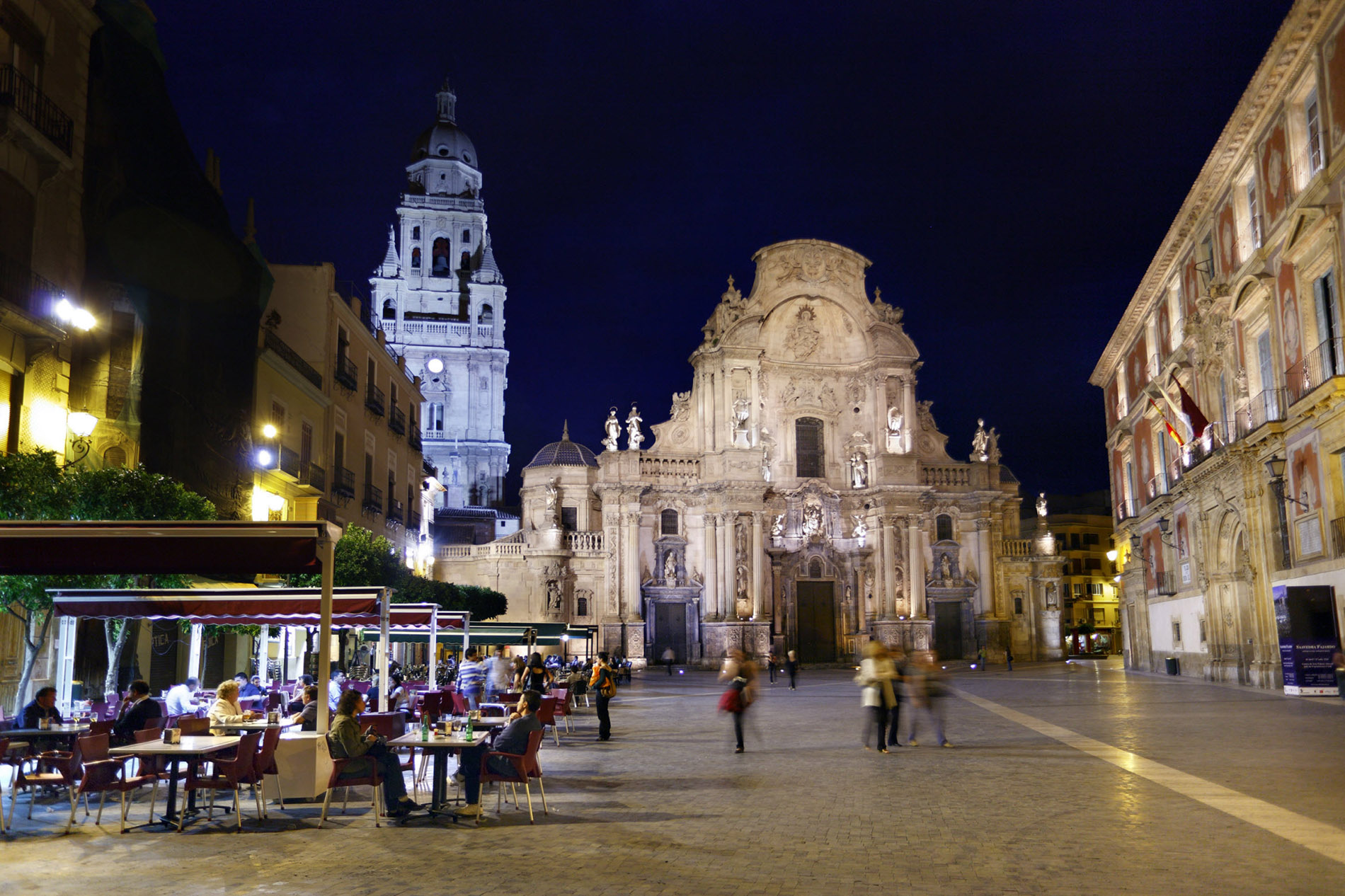A chain of mountains surrounds the plain on which sits Murcia, a city of Arab origin whose existence is closely linked to the fertile plains of the Segura River. From its historic streets featuring numerous trades and crafts emerges the tower of the cathedral, one of the icons of the city.
Although the region of Murcia has been inhabited for more than 2,000 years, the city of Murcia was not founded until 831, when the Emir of Cordoba Abd ar-Rahman II commissioned a walled city on the banks of the river Segura, to be the provincial capital under the Caliphate.
It was then that the Moorish region of Mursiya started to gain importance, until it became part of the Kingdom of Castile in the 13th century. Today, many places in the city still evoke its Moorish past.
The architectural remains of the Almunia Real, the second residence of the Moorish monarchs, are particularly interesting. The site is about five kilometres north of Murcia, and many items recovered there can be seen at the Santa Clara Museum. Parts of the Moorish city wall can also still be seen in different parts of Murcia’s historic quarter.
| Admission to the Smart Tourism Destinations Programme | Murcia joined the Smart Tourism Destinations programme by drawing up the Diagnostic Report and Action Plan needed to turn it into a Smart Destination, which it carried out in November of 2014. |
| Outstanding initiatives
|
|
Technical data
VAT number: P3003000AAddress: Glorieta de España, 1 España
Postal code: 30004
Telephone: 968358600
Region: Región de Murcia
Province: Murcia
Population: Murcia
Country: España
Local entity type: Ayuntamiento
Date of membership: 20191017
Diagnosis: Sí
Diagnosis date: 12/01/2024
Destination Type: Rural de interior
Population: 459,403
Area (km²): 88,511.00
Density (inhab/km²): 519.03
Level in the Network: Nivel 3




















